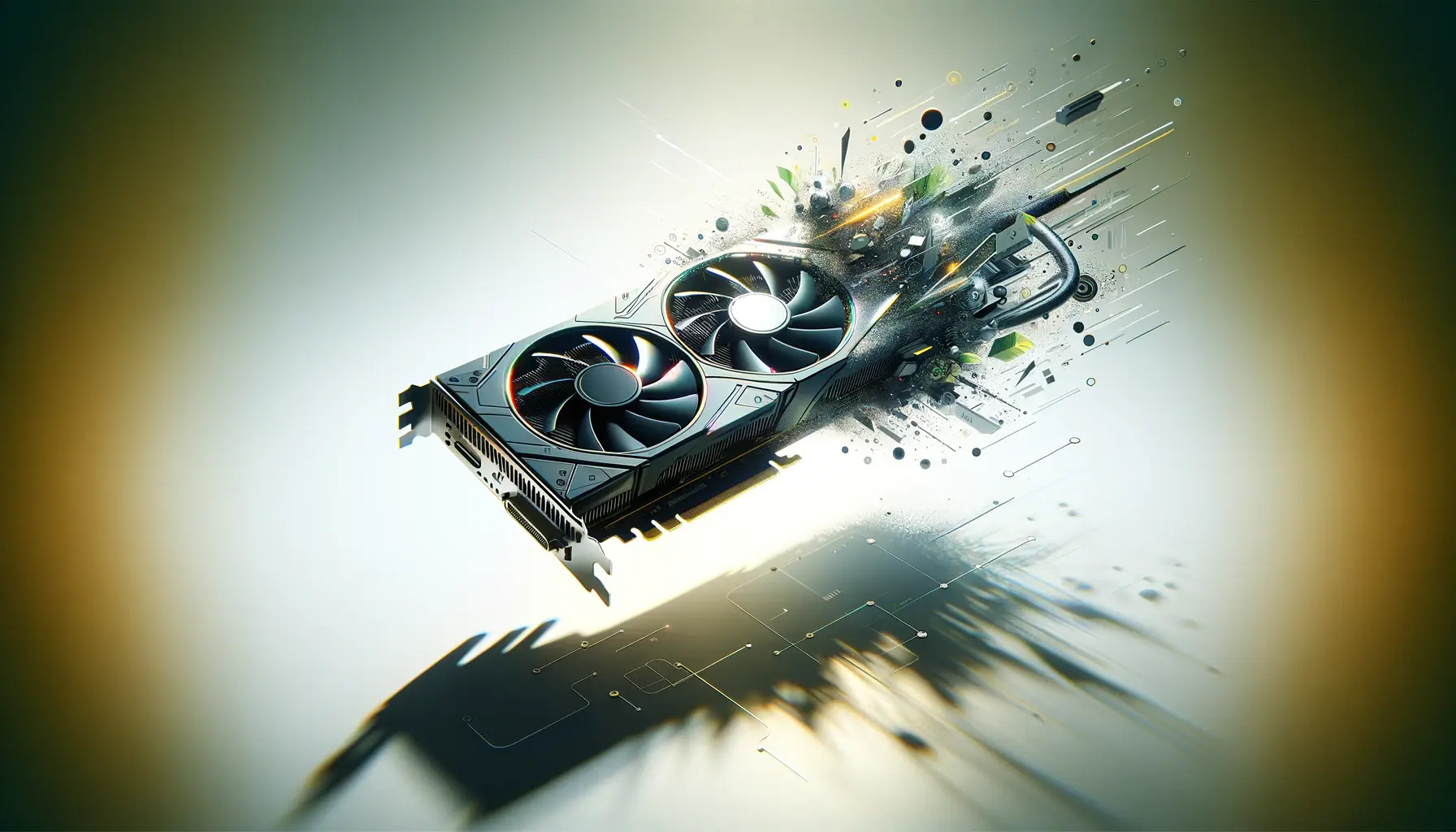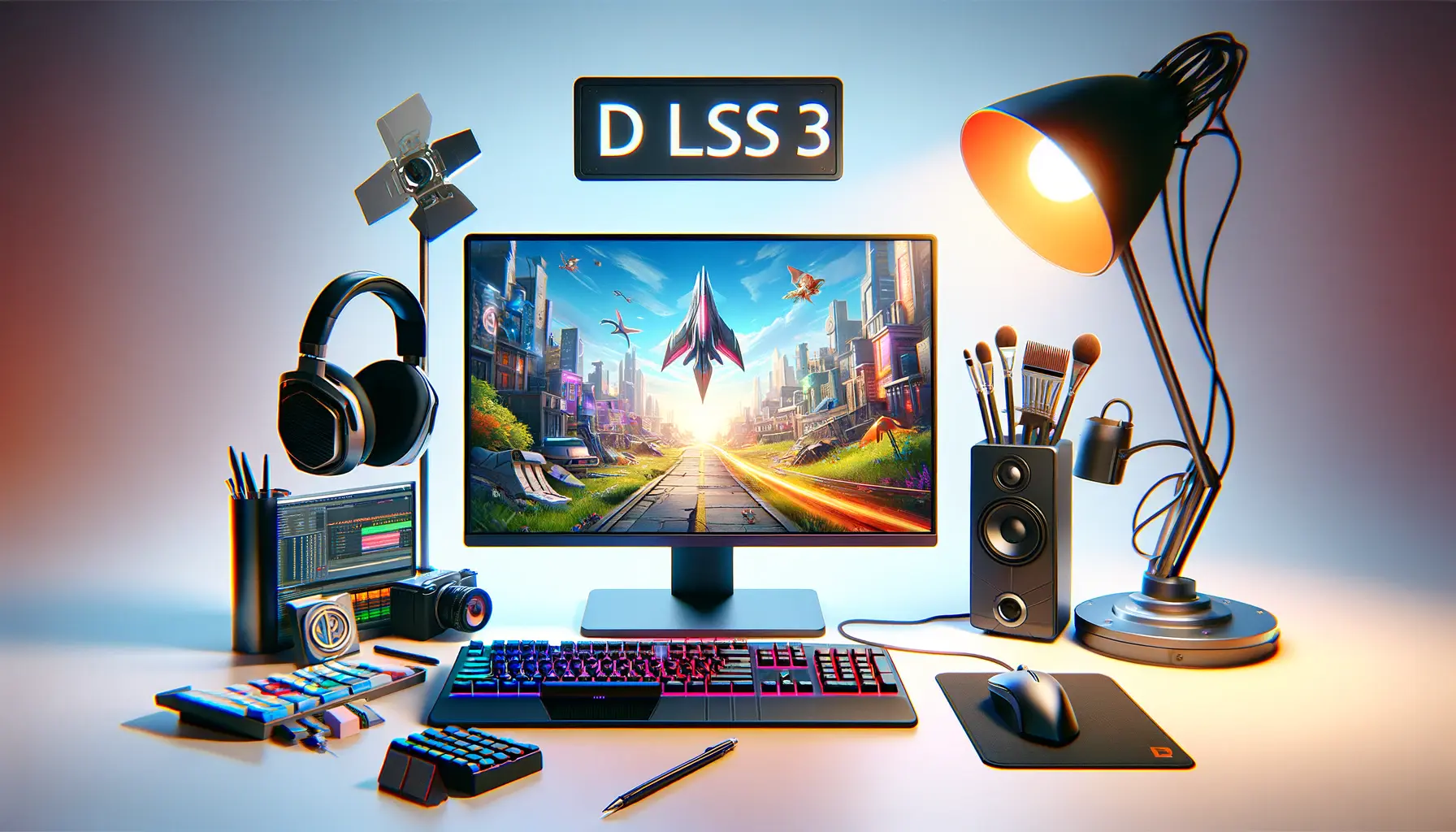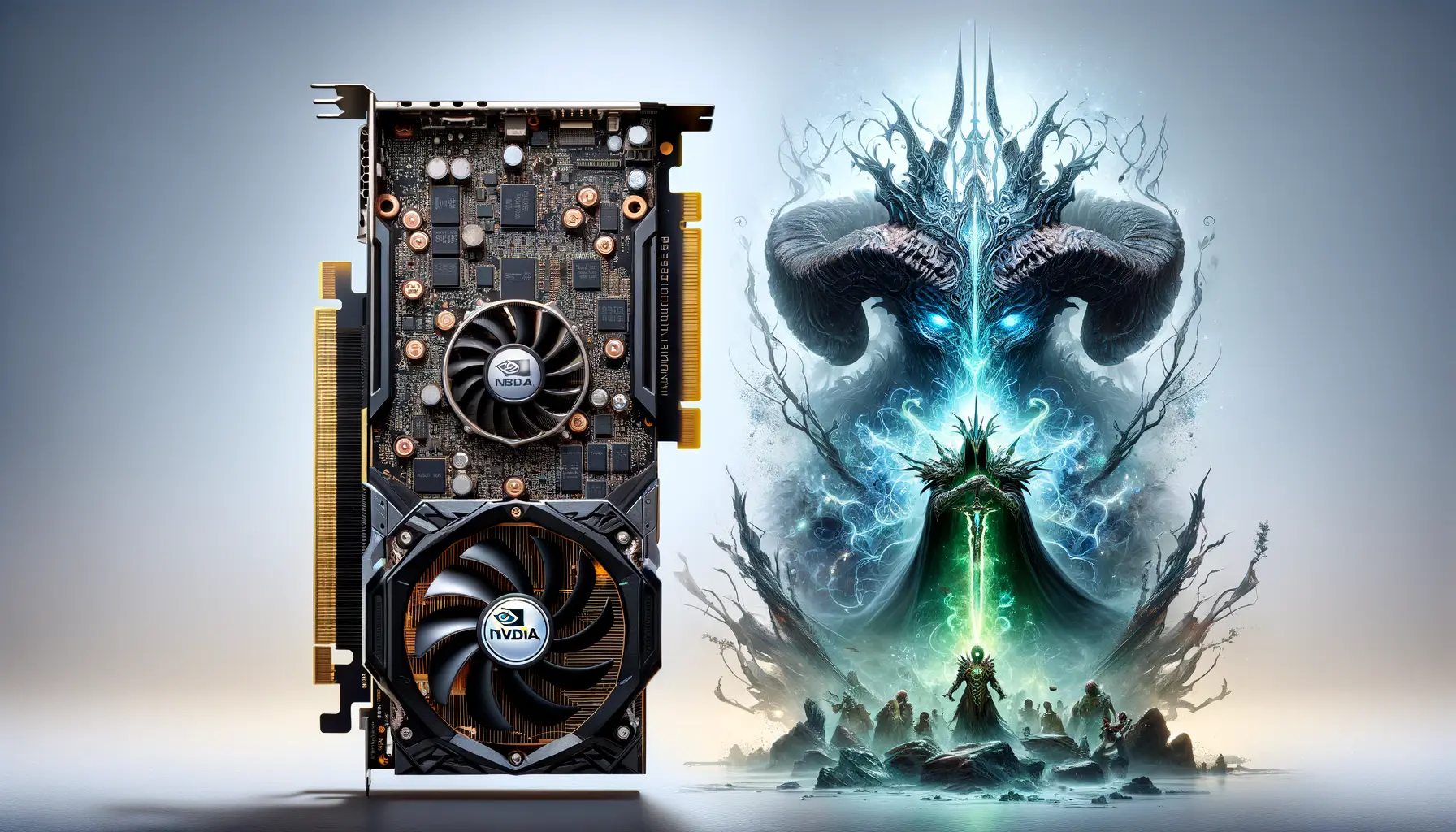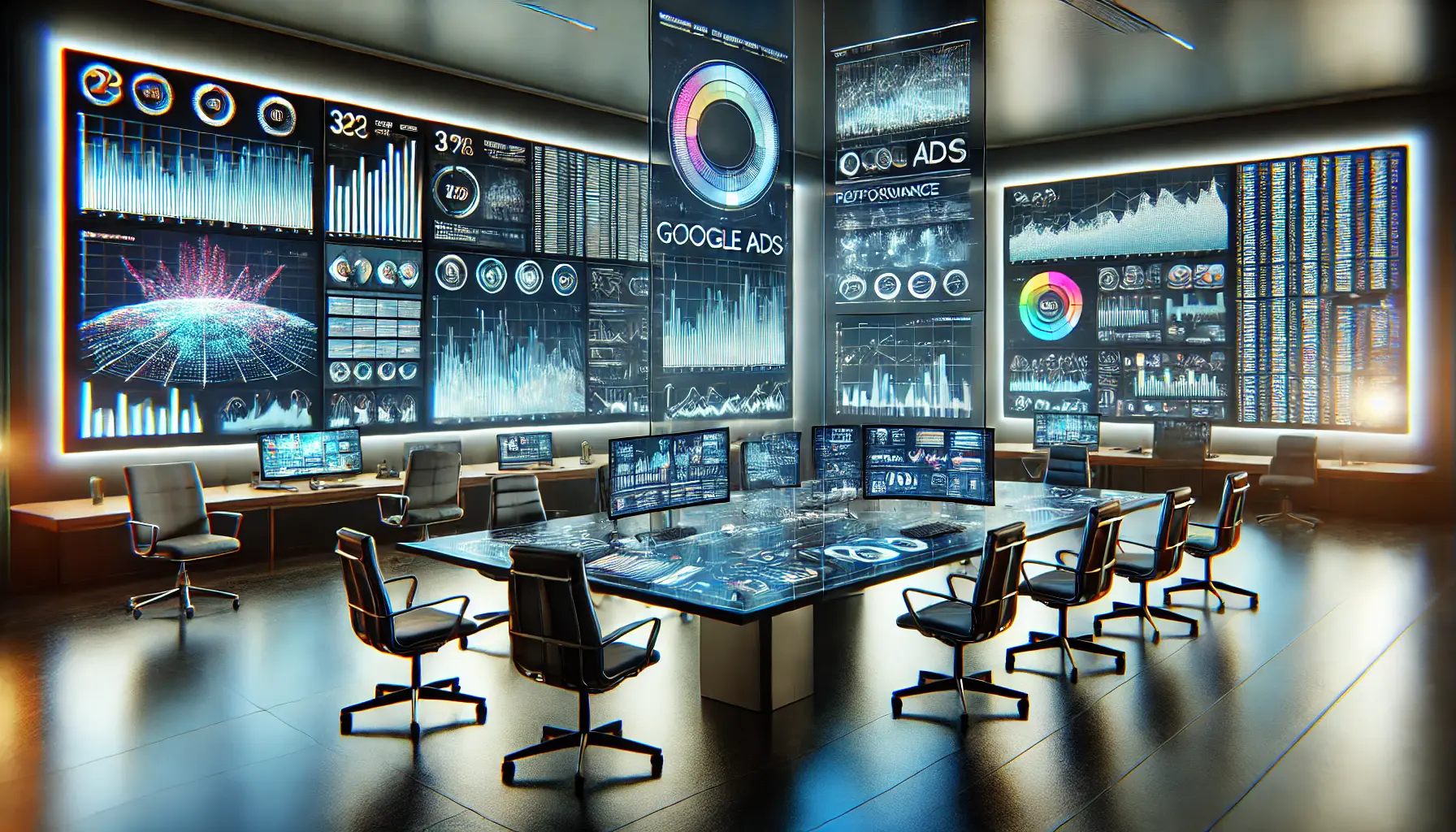The realm of gaming technology is witnessing a revolutionary phase with the advent of NVIDIA’s DLSS 3, a cutting-edge feature designed to redefine the gaming experience.
DLSS, or Deep Learning Super Sampling, has been a game-changer since its inception, offering gamers not just improved frame rates but also significantly enhanced image quality.
The latest updates to DLSS 3 have set the gaming community abuzz, promising even more remarkable improvements in performance and visual fidelity.
At its core, DLSS 3 leverages artificial intelligence and machine learning to upscale images in real-time, allowing games to run at higher resolutions without compromising on performance.
This technology has been pivotal for gamers who seek to enjoy their favorite titles at the best possible quality settings, even on hardware that would otherwise struggle to maintain smooth frame rates.
With the updates, NVIDIA aims to push the boundaries further, enhancing the technology to offer unprecedented levels of efficiency and image quality.
- Understanding DLSS 3 and Its Impact on Gaming
- The Evolution of DLSS Technology
- DLSS 3’s Frame Generation Technology Explained
- Comparing DLSS 3 with Other Upscaling Technologies
- Optimizing Gaming Experience with DLSS 3
- DLSS 3 in Esports and Competitive Gaming
- DLSS 3 and the Future of Gaming Graphics
- Embracing the Future with DLSS 3
- DLSS 3 Updates: Your Questions Answered
Understanding DLSS 3 and Its Impact on Gaming
What is DLSS 3?
DLSS 3 is the third iteration of NVIDIA’s proprietary upscaling technology, designed to boost frame rates by intelligently rendering fewer pixels and then using AI to upscale the image to the desired resolution.
This process not only improves game performance but also maintains, and in some cases, enhances the visual quality.
The technology is a boon for gamers, especially those with RTX graphics cards, as it allows them to experience the latest games at high resolutions and settings without needing to upgrade their hardware frequently.
The significance of DLSS 3 in the gaming industry cannot be overstated.
By providing a solution that balances performance with quality, NVIDIA has addressed one of the most pressing challenges faced by both gamers and developers.
Games can now be designed with higher fidelity graphics without worrying about alienating players with less powerful systems.
This democratization of high-quality gaming experiences is a leap forward in making cutting-edge graphics accessible to a broader audience.
Key Enhancements in DLSS 3
The latest updates to DLSS 3 have introduced several key enhancements that have caught the attention of the gaming community.
Among these improvements is the introduction of Frame Generation technology, which works in tandem with the existing DLSS methods to produce smoother animations and more fluid gameplay.
This advancement is particularly beneficial in fast-paced titles where every millisecond of response time counts.
Another notable enhancement is the improvement in image quality.
Previous versions of DLSS have faced criticism for occasionally producing images that, while higher in frame rate, could sometimes lack sharpness or detail compared to native rendering.
The updates to DLSS 3 aim to rectify this by employing more advanced AI algorithms that better preserve the original image’s detail while still providing the performance benefits DLSS is known for.
DLSS 3’s updates signify a major leap in gaming technology, offering both performance improvements and enhanced visual fidelity, thus setting a new standard for what gamers can expect from their gaming experiences.
The Evolution of DLSS Technology
Since its introduction, Deep Learning Super Sampling (DLSS) technology has undergone significant evolution, each version bringing with it substantial improvements over the last.
The journey from DLSS 1.0 to the latest DLSS 3 updates showcases NVIDIA’s commitment to refining and advancing this technology to meet the ever-growing demands of the gaming community.
Understanding this evolution provides insight into how DLSS has become a cornerstone of modern gaming graphics.
DLSS 1.0 marked the beginning of NVIDIA’s foray into AI-driven image upscaling, offering gamers the ability to boost their frame rates by rendering games at a lower resolution and then upscaling them to match their monitor’s resolution.
While revolutionary, the first iteration faced criticism for its image quality, which sometimes appeared blurry or less detailed compared to native resolution rendering.
With the release of DLSS 2.0, NVIDIA made significant strides in improving the technology.
This version introduced a new AI model that was trained on a broader range of games, resulting in better image quality and more consistent performance across different titles.
DLSS 2.0 was a major step forward, addressing many of the criticisms of the initial release and gaining widespread adoption among gamers and developers alike.
DLSS 3, the latest iteration, builds upon the foundation laid by its predecessors, introducing several key innovations that further enhance performance and image quality.
Among these are:
- Frame Generation: A groundbreaking feature that generates additional frames in between those rendered by the GPU, creating a smoother and more fluid gaming experience.
- Improved AI Algorithms: Enhanced algorithms that offer better image quality, with sharper details and more accurate color reproduction.
- Wider Compatibility: DLSS 3 extends support to a broader range of games and applications, making it more accessible to gamers and developers.
The evolution of DLSS technology from its inception to the present day reflects NVIDIA’s dedication to pushing the boundaries of gaming performance and visual fidelity.
Each version has brought with it improvements that have made a tangible difference in the gaming experience, with DLSS 3 representing the current pinnacle of this technology.
Impact on Game Development
The advancements in DLSS technology, particularly with the introduction of DLSS 3, have had a profound impact on game development.
Developers now have the tools to create more visually stunning games without worrying about alienating players with less powerful hardware.
This has opened up new possibilities for game design, allowing for the inclusion of more complex textures, lighting effects, and other graphics-intensive features that were previously too demanding for real-time rendering on average systems.
Furthermore, the adoption of DLSS technology has become a selling point for games, with many developers highlighting DLSS support as a key feature.
This not only enhances the appeal of the games but also encourages gamers to invest in NVIDIA’s RTX series GPUs, knowing that they will be able to enjoy the best possible performance and image quality.
The continuous improvement of DLSS technology, culminating in DLSS 3, has significantly influenced the gaming industry, shaping both the development of new titles and the gaming experience itself.
DLSS 3’s Frame Generation Technology Explained
One of the most significant enhancements introduced with DLSS 3 is the Frame Generation technology.
This innovative feature represents a leap forward in NVIDIA’s quest to enhance gaming performance and visual quality.
Frame Generation works by interpolating frames, effectively increasing the game’s frame rate beyond what the hardware is natively capable of producing.
This section delves into the mechanics of Frame Generation and its implications for gamers.
At its core, Frame Generation utilizes AI to analyze consecutive frames of a game and then generates additional frames in between, creating a smoother and more fluid visual experience.
This process is particularly beneficial in fast-paced games where motion clarity and responsiveness are crucial.
By effectively doubling or even tripling the frame rate, Frame Generation ensures that gameplay remains smooth even during intense action sequences.
The benefits of Frame Generation extend beyond just improved frame rates:
- Enhanced Motion Clarity: By increasing the number of frames, motion in games becomes smoother, reducing motion blur and making fast-moving objects easier to track.
- Reduced Input Lag: Higher frame rates lead to reduced input lag, providing gamers with a more responsive gaming experience.
- Improved Visual Quality: Frame Generation also contributes to the overall visual quality of games, making animations appear more fluid and lifelike.
Despite its advantages, Frame Generation technology is not without its challenges.
The process of interpolating frames relies heavily on the AI’s ability to accurately predict motion, which can sometimes lead to artifacts or anomalies in the generated frames.
However, NVIDIA’s continuous improvements to the AI models used in DLSS 3 have significantly mitigated these issues, ensuring that the benefits far outweigh any potential drawbacks.
Real-World Applications and Performance
The real-world impact of DLSS 3’s Frame Generation technology can be seen in its adoption by several high-profile games.
Titles such as “Cyberpunk 2077,” “Fortnite,” and “Call of Duty: Warzone” have implemented DLSS 3, offering players enhanced performance and visual quality.
Gamers have reported noticeable improvements in gameplay smoothness and responsiveness, particularly in scenarios where high frame rates are essential for competitive play.
Moreover, the inclusion of Frame Generation technology has allowed gamers with older or less powerful hardware to experience modern games at higher settings than would otherwise be possible.
This democratization of high-quality gaming experiences is a testament to the potential of DLSS 3 to shape the future of gaming.
While Frame Generation is a game-changer for performance and visual quality, its effectiveness can vary depending on the game and the hardware it’s running on. Continuous updates and optimizations from NVIDIA are key to maximizing its benefits.
Comparing DLSS 3 with Other Upscaling Technologies
In the landscape of gaming technology, DLSS 3 is not the only upscaling solution vying for the attention of developers and gamers alike.
Competing technologies, such as AMD’s FidelityFX Super Resolution (FSR) and Intel’s XeSS, offer their own approaches to enhancing game performance and visual quality.
Understanding how DLSS 3 stacks up against these alternatives is crucial for appreciating its unique advantages and the innovation it brings to the table.
AMD’s FidelityFX Super Resolution (FSR) is perhaps the most direct competitor to DLSS.
FSR also aims to improve frame rates by upscaling lower-resolution images, but it does so without relying on AI or requiring specific hardware.
This makes FSR more universally applicable across a wider range of GPUs, including those from NVIDIA.
However, FSR’s approach, while effective in boosting performance, often results in a noticeable compromise in image quality compared to DLSS 3’s AI-driven method.
Intel’s XeSS, on the other hand, is closer to DLSS in its use of machine learning for image upscaling.
Designed to work with Intel’s Arc series GPUs, XeSS aims to provide a similar balance of performance and image quality improvements.
While promising, XeSS is still in its early stages of adoption and has yet to be as widely implemented in games as DLSS.
The comparison between these technologies highlights several key advantages of DLSS 3:
- AI-Driven Excellence: DLSS 3’s use of advanced AI algorithms allows for superior image quality, closely matching or even surpassing native resolution rendering in some cases.
- Frame Generation: The unique Frame Generation feature of DLSS 3 sets it apart, offering smoother gameplay by interpolating additional frames.
- Hardware Synergy: Designed to leverage the power of NVIDIA’s RTX GPUs, DLSS 3 benefits from the hardware’s ray tracing and tensor cores, enhancing its efficiency and effectiveness.
While FSR and XeSS provide valuable alternatives for gamers without access to NVIDIA’s RTX series, DLSS 3’s integration of AI and hardware-specific features offers a more refined solution.
Its ability to deliver both high performance and exceptional image quality makes it a standout choice for those seeking the best possible gaming experience.
Future of Upscaling Technologies
The ongoing development and refinement of upscaling technologies like DLSS 3, FSR, and XeSS are indicative of a broader trend in the gaming industry towards more intelligent and efficient rendering solutions.
As these technologies continue to evolve, we can expect further improvements in performance, image quality, and accessibility.
The competition among these solutions drives innovation, benefiting gamers with better-looking and smoother-running games on a wider range of hardware.
Looking ahead, the future of upscaling technologies is likely to involve even greater integration of AI and machine learning, with algorithms becoming more sophisticated and capable of delivering near-native image quality at significantly higher frame rates.
The advancements in DLSS 3 and its competitors are just the beginning of what promises to be an exciting era for gaming technology.
DLSS 3’s innovative approach to upscaling, particularly with its Frame Generation technology, positions it at the forefront of the quest for the perfect balance between performance and visual fidelity in gaming.
Optimizing Gaming Experience with DLSS 3
The introduction of DLSS 3 has opened up new avenues for optimizing gaming experiences, allowing players to enjoy their favorite titles at unprecedented levels of performance and visual quality.
The technology not only benefits gamers by enhancing the smoothness and clarity of game visuals but also offers developers the flexibility to push the boundaries of game design without compromising on playability.
This part of the article explores practical tips for gamers and developers looking to make the most out of DLSS 3 technology.
For gamers, the key to harnessing the full potential of DLSS 3 lies in understanding the settings and configurations that best suit their hardware and gaming preferences.
DLSS 3 offers various modes, including Quality, Balanced, Performance, and Ultra Performance, each providing a different balance between image quality and frame rate improvement.
Experimenting with these modes can help gamers find the sweet spot that offers the best gaming experience for their setup.
Developers, on the other hand, can leverage DLSS 3 to enhance the visual fidelity and performance of their games.
By integrating DLSS 3, developers can offer gamers the option to play at higher resolutions and settings without the need for prohibitively powerful hardware.
This not only makes games more accessible to a wider audience but also allows for the inclusion of more detailed textures, complex lighting effects, and other resource-intensive graphical features.
Best Practices for Gamers
- Update Your Drivers: Ensure that your NVIDIA GPU drivers are up to date to take advantage of the latest DLSS 3 enhancements and optimizations.
- Choose the Right DLSS Mode: Experiment with different DLSS modes to find the one that offers the best balance of performance and image quality for your specific hardware and game.
- Monitor Performance: Use in-game performance monitoring tools to assess the impact of DLSS 3 on frame rates and adjust settings accordingly for an optimal gaming experience.
Guidelines for Developers
- Implement DLSS 3 Early: Consider integrating DLSS 3 early in the development process to fully adapt your game’s graphics and performance optimizations to this technology.
- Offer Customizable Settings: Provide players with options to customize DLSS settings within your game, allowing them to tailor the experience to their preferences and hardware capabilities.
- Engage with the Community: Gather feedback from players on their experiences with DLSS 3 in your game and use this input to fine-tune performance and visual quality.
By following these best practices, both gamers and developers can maximize the benefits of DLSS 3, ensuring that games not only look stunning but also run smoothly across a wide range of hardware configurations.
The synergy between DLSS 3’s advanced technology and thoughtful optimization strategies promises to elevate the gaming experience to new heights.
Optimizing the use of DLSS 3 technology is key to unlocking its full potential, enhancing both the visual quality and performance of games for a superior gaming experience.
DLSS 3 in Esports and Competitive Gaming
The impact of DLSS 3 extends beyond casual gaming, making significant inroads into the realm of esports and competitive gaming.
In environments where every frame and millisecond counts, the advantages offered by DLSS 3’s Frame Generation and upscaling technologies can be the difference between victory and defeat.
This part of the article examines the role of DLSS 3 in competitive gaming, highlighting its benefits and the considerations for players and organizers.
For competitive gamers, the primary concern is often not just the visual quality of the game but also the responsiveness and fluidity of the gameplay.
DLSS 3 addresses these needs by providing a smoother gaming experience without sacrificing performance.
The technology’s ability to generate additional frames and upscale images in real-time means that players can enjoy higher resolutions and better visuals without experiencing the input lag that typically accompanies higher graphic settings.
However, the adoption of DLSS 3 in esports presents its own set of challenges and considerations:
- Hardware Requirements: Since DLSS 3 is exclusive to NVIDIA’s RTX series GPUs, players and teams need to have access to compatible hardware to take advantage of the technology.
- Game Support: Not all games currently support DLSS 3, so its benefits are limited to titles that have integrated the technology. This is gradually changing as more developers adopt DLSS 3.
- Balance Between Performance and Quality: Finding the right balance between visual quality and performance is crucial in competitive gaming. Players need to configure DLSS settings to ensure they are not at a visual or performance disadvantage.
Despite these considerations, the potential benefits of DLSS 3 for esports are significant.
By enabling higher frame rates and better visuals, DLSS 3 can enhance player performance, making games more enjoyable and competitive.
Moreover, as DLSS 3 continues to be adopted by more games and supported by more hardware, its impact on the competitive gaming landscape is expected to grow.
Future Prospects for DLSS 3 in Esports
Looking forward, the integration of DLSS 3 into esports and competitive gaming is poised to evolve further.
As the technology matures and becomes more widely supported, it could become a standard feature in competitive gaming setups, offering players a competitive edge while ensuring games look their best.
Additionally, the ongoing development of DLSS technology by NVIDIA promises even more improvements in performance and image quality, further enhancing its appeal to competitive gamers.
For esports organizers, the inclusion of DLSS 3 technology could also influence the choice of games and hardware for tournaments, potentially leading to partnerships with hardware manufacturers and game developers.
This symbiotic relationship between technology providers, game developers, and the esports community is likely to drive the future of competitive gaming, making it more accessible, enjoyable, and visually stunning than ever before.
The adoption of DLSS 3 in esports and competitive gaming highlights the technology’s potential to redefine the standards of performance and visual quality in high-stakes gaming environments.
DLSS 3 and the Future of Gaming Graphics
The advancements brought about by DLSS 3 are not just a testament to NVIDIA’s innovation but also a glimpse into the future of gaming graphics.
As we stand on the brink of new technological horizons, DLSS 3 represents a significant step towards realizing the full potential of real-time rendering and AI in gaming.
This concluding part of the article explores the implications of DLSS 3 for the future of gaming graphics and the broader gaming industry.
DLSS 3, with its sophisticated AI-driven upscaling and Frame Generation technologies, has set a new benchmark for what gamers can expect from their gaming experiences.
By enabling higher frame rates and improved visual fidelity without the need for prohibitively expensive hardware, DLSS 3 is democratizing access to high-quality gaming experiences.
This shift is likely to influence not only how games are developed and played but also how they are perceived by a wider audience.
The ripple effects of DLSS 3’s innovation extend into several key areas:
- Game Development: Developers now have more freedom to create visually stunning games without being constrained by hardware limitations, potentially leading to a new era of graphical excellence and immersive gameplay.
- Hardware Innovation: The success of DLSS 3 could spur further innovation in GPU technology, with hardware manufacturers striving to support advanced AI and machine learning capabilities.
- Accessibility: By making high-end gaming experiences more accessible, DLSS 3 is broadening the gaming market, inviting more players to explore the world of PC gaming.
As we look to the future, the continued evolution of DLSS and similar technologies is poised to redefine the landscape of gaming graphics.
The integration of AI and machine learning in real-time rendering processes promises not only more visually impressive games but also more efficient and intelligent rendering solutions.
This could lead to a future where the line between virtual and reality in gaming graphics becomes increasingly blurred, offering players experiences that are more immersive and lifelike than ever before.
In conclusion, DLSS 3 is more than just an incremental update; it’s a harbinger of the future of gaming graphics.
As technology continues to evolve, the gaming industry stands on the cusp of a new era of graphical fidelity and performance.
The journey of DLSS 3 from its inception to its current state is a testament to the transformative power of technology in gaming, and it’s an exciting preview of what’s to come in the world of gaming graphics.
The impact of DLSS 3 on the gaming industry underscores the pivotal role of AI and machine learning in shaping the future of gaming graphics, promising a future where games are not only more accessible but also more visually stunning and immersive.
Embracing the Future with DLSS 3
The journey through the latest enhancements and capabilities of DLSS 3 reveals a technology that is not only reshaping the landscape of gaming graphics but also setting new standards for performance and visual fidelity.
As we have explored the various facets of DLSS 3, from its impact on game development to its role in competitive gaming, it becomes clear that this technology is at the forefront of the gaming industry’s future.
The thoughtful integration of AI and machine learning has allowed NVIDIA to offer a solution that addresses some of the most significant challenges faced by gamers and developers alike.
The Pinnacle of Gaming Performance and Quality
DLSS 3 stands as a testament to the power of innovation in the pursuit of excellence.
By leveraging deep learning to enhance image quality and frame rates, NVIDIA has provided a glimpse into a future where gaming experiences are bound only by the limits of imagination.
The updates to DLSS 3, particularly the introduction of Frame Generation technology, underscore the company’s commitment to pushing the boundaries of what is possible in gaming graphics.
A Catalyst for Industry-Wide Change
The influence of DLSS 3 extends beyond individual gaming experiences, acting as a catalyst for change across the entire gaming industry.
Its implications for game development, hardware innovation, and accessibility are profound:
- Developers are empowered to create more ambitious and visually stunning games, knowing that DLSS 3 can help deliver these experiences to a broad audience.
- Hardware manufacturers are motivated to innovate, ensuring their products can support and enhance the capabilities of technologies like DLSS 3.
- More gamers can access high-quality gaming experiences, thanks to DLSS 3’s ability to optimize performance across a range of hardware specifications.
In conclusion, DLSS 3 is not just a technological achievement; it is a vision of the future of gaming.
As we look forward to the continued evolution of this technology, it is exciting to consider the new horizons that will be unlocked for gamers around the world.
The latest enhancements to DLSS 3 are just the beginning, and the potential for further innovation is vast.
With DLSS 3, NVIDIA has laid the groundwork for a future where gaming is more immersive, more accessible, and more beautiful than ever before.
DLSS 3 Updates: Your Questions Answered
As DLSS 3 continues to revolutionize gaming graphics and performance, many gamers and enthusiasts have questions about its features, compatibility, and impact. Here are answers to some of the most frequently asked questions about DLSS 3.
DLSS 3 is NVIDIA’s latest deep learning super sampling technology, enhancing game performance and image quality using AI-driven frame generation and super resolution.
DLSS 3 is supported on NVIDIA GeForce RTX 40 Series GPUs, leveraging their advanced AI processing capabilities for optimal performance.
Key benefits include significantly improved frame rates, enhanced image quality, and smoother gameplay, especially in graphically intensive games.
Yes, by generating additional frames and reducing latency, DLSS 3 enhances game responsiveness, crucial for competitive gaming.
Not all games currently support DLSS 3. Compatibility depends on developers integrating the technology into their titles.
DLSS 3 introduces frame generation, offering superior performance improvements and image quality enhancements over previous versions.
No, DLSS 3 requires an NVIDIA RTX GPU as it utilizes the specific AI processing capabilities of these graphics cards.
DLSS 3 can be enabled from the graphics settings menu of supported games, where players can select from various DLSS modes.













